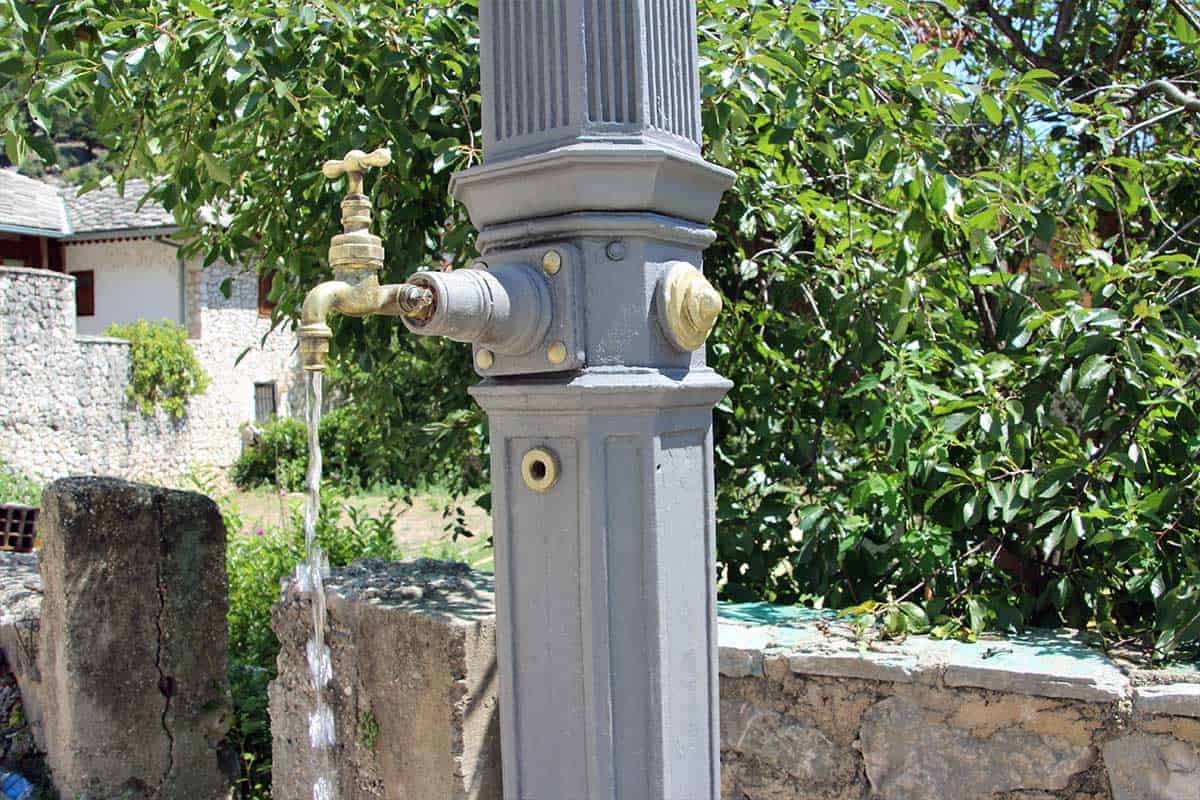
Herzegovina traditionally lacks water, especially during the summer months. In the area around Stolac there are numerous “kapinas”, holes in stone used for storing rain water. Some are natural, while others are probably man-made. In later periods, wells and cisterns were built. Four vakifs (benefactors) built cisterns in mosque courtyards, used primarily by Muslims for ablutions. The situation was somewhat easier in the Čaršija area, where the river Bregava flows past. Shadirvans (fountains), channels and pools adorned the houses of Stolac, of which the most sumptuous ones were built next to the river.
With the arrival of the Austro-Hungarians, the number of inhabitants and military units rose, so that the problem of water supply became acute. Following a citizen initiative, in 1908 the town received its first water supply. In honour of that achievement, a memorial fountain was built for the engineer Burian. In this period, public water fountains were set up in residential areas. Stolac had 36 public water fountains, some of which are still functioning today, serving citizens and visitors as refreshment during hot summer days. In this period, the first public swimming pool was also built, known as Kupalje. After the construction of water supply in Stolac, shadirvans were built in the courtyards of three mosques.